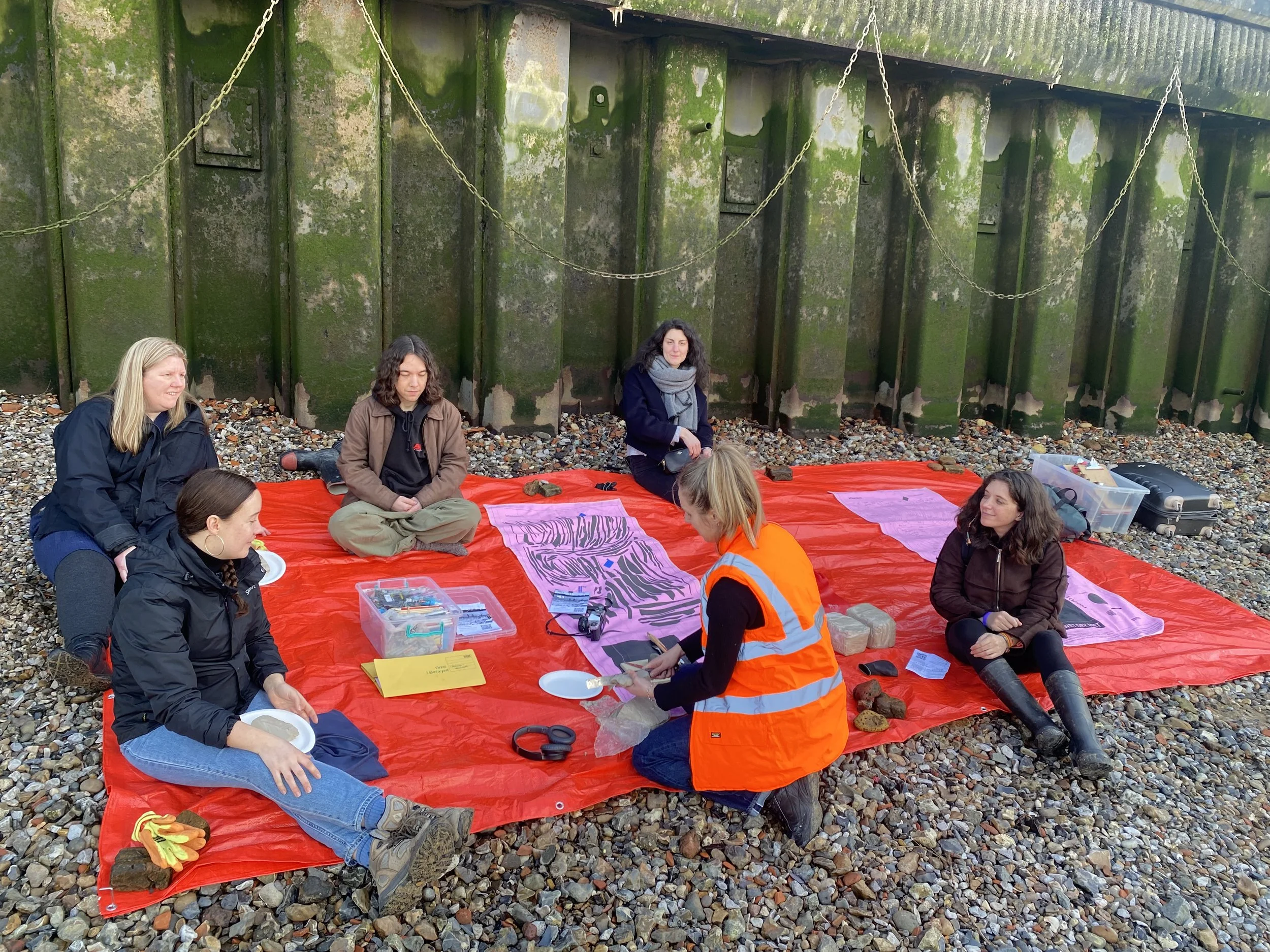INHABITING WET WORLDS:
Part I: Using storytelling to understand the complexities of the Foreshore
beyond what is visible, a participative audio-guide will invite members of the
public to: move around the Foreshore, inspect its features under a different lens
and make acquaintances with non-human characters that share this space.
Through performative instructions, listeners will also be asked to consider their
own relationship with the river as well as the water inside their bodies.
Transition: With these fragments of the foreshore in mind, listeners will realise
that the built environment has a great impact on our relationship with water the
river... By proposing new designs along the Thames Foreshore, can we change
the way we connect to the eco-system?
Part II: Participants will be invited to use clay to sculpt weird and wonderful
objects inspired by forms of the foreshore and their insight into the world of
non-human needs introduced to them during the guided sound piece. Through
these designs, participants may explore ways in which we can co-habitate with
non-human life: for example a bench that is for humans and seagulls. Or
submerged sculptures that create little pools of water at low tide for micro-
organisms to live!
More research on the Thames Foreshore here: https://crunchy.cargo.site

